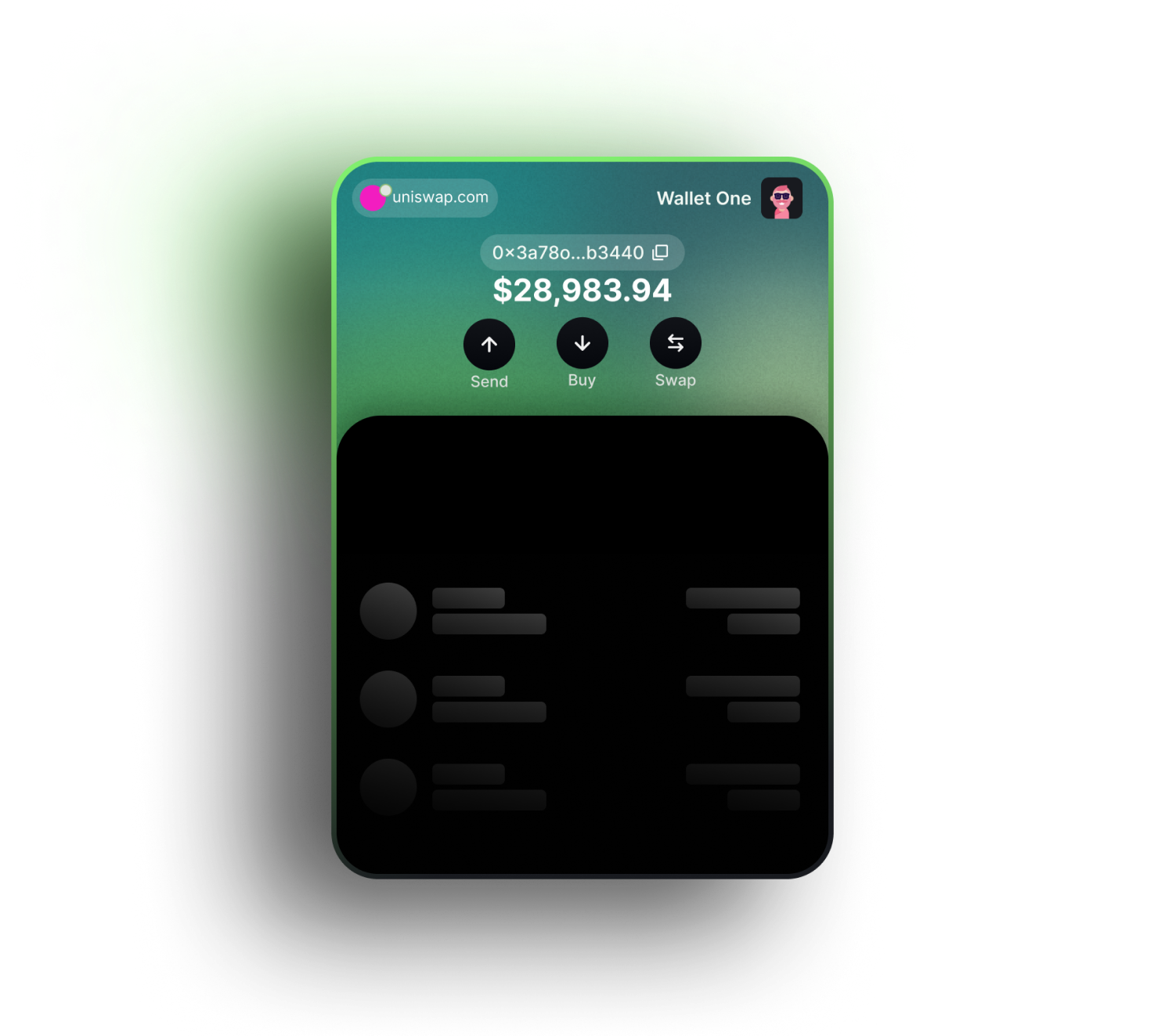Easy way to Buy  UNUS SED LEO(LEO) Online with Wigwam crypto app
UNUS SED LEO(LEO) Online with Wigwam crypto app
Download Extension
How to buy and hold LEO with Wigwam
1. Choose a token number that you want to buy
2. Create a wallet, where to store your crypto
3. Pay with credit card
4. Check your crypto in the created wallet
Why Wigwam is the best crypto wallet for UNUS SED LEO (LEO) storage
Ultimate security, only you have access to your UNUS SED LEO tokens
Send, Receive, Store your UNUS SED LEO tokens free and without limitations
Check the real-time value of your crypto tokens
Buy, Sell, Exchange UNUS SED LEO (LEO) directly in the wallet
Stake UNUS SED LEO (LEO) by connecting Wigwam to the popular DeFi dApps
No KYC or personal data collected

UNUS SED LEO (LEO) token review
UNUS SED LEO (LEO) is a utility token created by iFinex Inc. The token was launched in May 2019 to replace the funds lost during an exploit of the Bitfinex Centralized Exchange where $850M was seized from the exchange, affecting its reputation. The token has three key purposes: to replace the lost funds, create possibilities for customers of the Bitfinex exchange, and develop the iFinex ecosystem.
The LEO token works on a dual blockchain system as it is both an ERC-20 and an EOS token, and has 64% of the token supply on the Ethereum blockchain and 36% on the EOS blockchain. This double compatibility enhances flexibility and interoperability for token holders, benefiting two separate communities and ecosystems. It is worth mentioning that using the token within the iFinex ecosystem provides diverse advantages, such as reduced fees and exclusive service access.
About
The UNUS SED LEO (LEO) token was launched by iFinex Inc, a Hong Kong-based company founded in 2012 which is also the creator of Bitfinex Centralized Exchange, EthFinex, and Tether stablecoin. Bitfinex initially started as a Peer-to-Peer margin lending platform for Bitcoin. Now, the exchange offers many other financial services such as cryptocurrency trading, P2P margin trading, P2P margin lending, and OTC services.
It is worth mentioning that inFinex Inc. has been involved in many controversies and legal issues that include a class action lawsuit against Tether and Bitfinex which was dismissed, the company also has been involved in lobbying as it spent a whopping total of $760,000 on lobbying in 2023.
LEO Token Use Cases
The LEO token has many use cases within the Bitfinex Exchange ecosystem and beyond:
Governance: LEO tokens offer transparent democratic governance, where token holders get involved in the decision-making by voting and feedback.
Discounts and Benefits on Bitfinex Exchange: Holding an LEO token can offer you a 25% fee discount on crypto withdrawal and deposit on the Bitfinex Exchange, and many other benefits as the token is intended to support the reduction of taker and lending fees for use of trading products and services offered by its parent company iFinex.
Trading Discounts: Depending on the amount of LEO tokens a user holds, they can get discounts on the trading fees on the BitfineX Exchange.
Lending Discounts: LEO token holders get their lending fees reduced on Bitfinex, which leads to a lower cost of borrowing cryptocurrencies.
Access to Exclusive services: Holding LEO tokens gives special access to users as Bitfinex offers exclusive services to such users.
Initial Exchange Offerings (IEOs): LEO tokens also allow users to participate in the Initial Exchange Offerings (IEOs) on Bitfinex, where users can access new cryptocurrency project’s tokens at an early stage.
It is also worth mentioning that the LEO token provides Bitfinex users with an extra layer of security through the Unus Sed Leo (USL). Through USL, LEO Token holders can decrease or eliminate trading fees on affiliated platforms and services.
Economic Value
The LEO token was launched in May 2019, following a $1B Initial Exchange Offering (IEO) with a max supply of 985.24M out of which 927.68M LEO are in circulation. The token was initially introduced to recover the funds lost during the 2018 Crypto Capital incident, where $850M was seized from Bitfinex. The funds raised by selling LEO tokens were intended to cover the debt and ensure Bitfinex’s working.
The tokens utilize a buyback and destruction mechanism, where Bitfinex repurchases and burns existing LEO tokens from the iFinex with the addition of a certain percentage from the company’s net profit, which reduces the circulating supply and increases the value of the remaining tokens.
Challenges
The LEO token is facing several challenges such as
Lack of utility: Although Bitfinex claims LEO as its utility token, it doesn’t offer much other than discounts and benefits to its holders. Meanwhile, many crypto tokens offer more diverse applications.
Technical Complexity: LEO tokens are being built on both the Ethereum and EOS blockchains, which means that it has to manage two separate sets of smart contracts, token balances, and integrations with different wallets and exchanges adding a layer of technical complexity.
Uncertain Future Prospects: LEO utilizes a buyback and burn mechanism to control its value but it's unclear what will happen after all LEO tokens in circulation have been bought back and burned. This also limits LEO’s lifespan, making it less attractive for long-term investors.
Disclaimer
This article is for informational purposes only and should not be interpreted as financial or investment advice. The views expressed herein represent solely the opinion of the author and are not intended to provide specific trading or investment recommendations. We do not guarantee the accuracy, completeness, or reliability of the information contained in this article. The cryptocurrency market is known for its high volatility and unpredictable fluctuations. Investors, traders, and anyone engaging with cryptocurrency are advised to conduct thorough research, consider a variety of perspectives, and acquaint themselves with applicable local regulations prior to making any investment decisions.
FAQ
You can buy LEO tokens in Wigwam dApp wallet or from centralized exchanges such as Coinbase, Binance, and Kraken.
No. However, some DeFi projects may propose such an option.
You can view it by visiting Etherscan and entering your wallet address in the search bar.
The exact steps may differ based on the wallet you're using, but generally, adding LEO tokens involves the following:
Access your crypto wallet, locate the "Add tokens" option, and input the LEO token details as outlined below:
- Token Contract Address: 0xe1F3C653248De6894d683cB2f10DE7CA2253046f
- Token Symbol: LEO
- Decimal Precision: With 18 Decimals
After entering the token details click on “Save” to add the LEO token to your wallet.
LEO is a cryptocurrency and it comes with the high volatility of the crypto market. Buying LEO or crypto is a high-risk investment and it should only be considered with a high tolerance for risk. It’s best to conduct research on LEO and its market sentiments and regulations before buying it.





